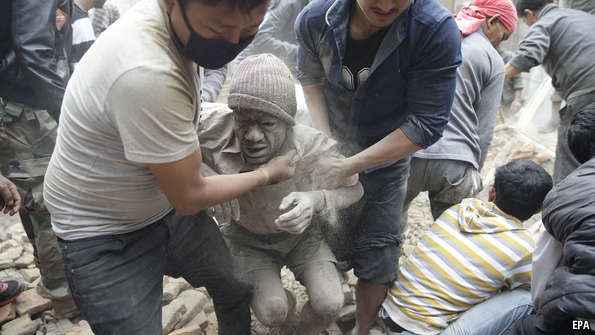7.9 Earthquake Quashes Monumental Nepal To The Ground

SEISMOLOGISTS, politicians and ordinary residents of Kathmandu, Nepal’s capital, have long feared the consequences of a big earthquake striking in or near the sprawling city. So when a huge earthquake struck 80km to the west of the city on April 25th, there was every reason to fear massive destruction and loss of life. The quake was rated at a magnitude of 7.9; tremors on that scale tend to happen at most a few times a year globally.
A Nepalese minister, Minendra Rijal, spoke of enormous damage and called for international help from agencies which are “more knowledgeable and equipped to handle the kind of emergency we face now”.
A resident in Kathmandu, speaking moments after the first shock, said he had witnessed buildings and walls collapsing, with older buildings proving the most vulnerable.
One symbol of the city, the Dharahara tower, an eight-storey, 213-step tower originally constructed in 1832, was toppled. In Patan square, a historic site in the centre of the city, monuments that have long drawn pilgrims and tourists were instantly reduced to rubble. A 72-year-old man called the quake the strongest he had felt in his life: “It was exactly what everyone was afraid of.
By early afternoon on April 25th more details of the destruction were becoming clear. Several people were reported killed by collapsed buildings, though as yet there were no reports of enormous losses. At least 50 people were reported trapped in rubble (like the man pictured above being freed by rescuers), though the total number was probably higher. It was fortunate that the earthquake struck by day, when many were outside or able to quickly leave their buildings.
The Economist.









Comments
This post currently has no comments.